8 Tips For Cooking Eggs In The Microwave
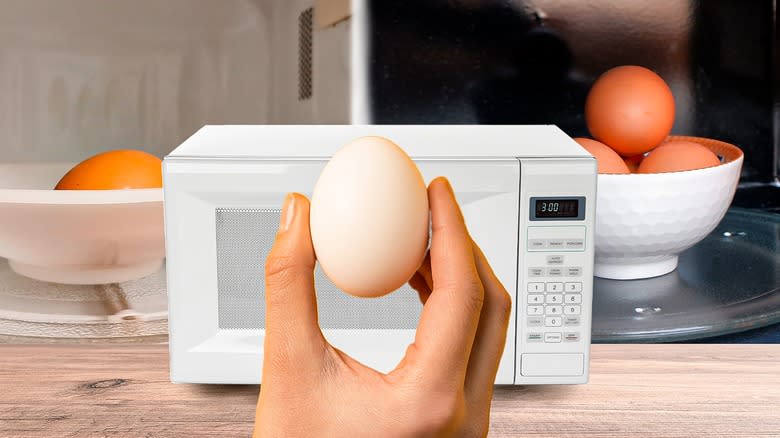
Whether you're busy shuffling kids off to school or rushing out the door to get to an early work meeting, finding an easy, protein-packed, and reliable breakfast might seem unattainable. You have the option of overnight oats or pre-made breakfast sandwiches, but those take forethought and significant time to prepare in advance.
Eggs are always a great, standard choice, but they are stereotypically time-consuming when cooked on the stove and tend to leave you with dishes to clean, which no one has time for in the morning. Yes, hard-boiled eggs or an egg bake can come into play, but, again, they require time and preparation.
The solution to a quick and healthy breakfast? Cooking your eggs in the microwave — a process that takes just minutes and results in a delicious meal each time. Even chef and restauranteur David Chang, who launched the Anyday Cookware line that is designed for cooking all of your meals in the microwave, agrees this is a great go-to option. Before you scoff at the thought, give it a try with the tips listed below. You'll be slinging poached eggs, scrambled eggs, and omelets without adding too much work to your plate in no time.
Read more: Hacks That Will Make Boiling Your Eggs So Much Easier
Make Sure You Pick The Right Vessel
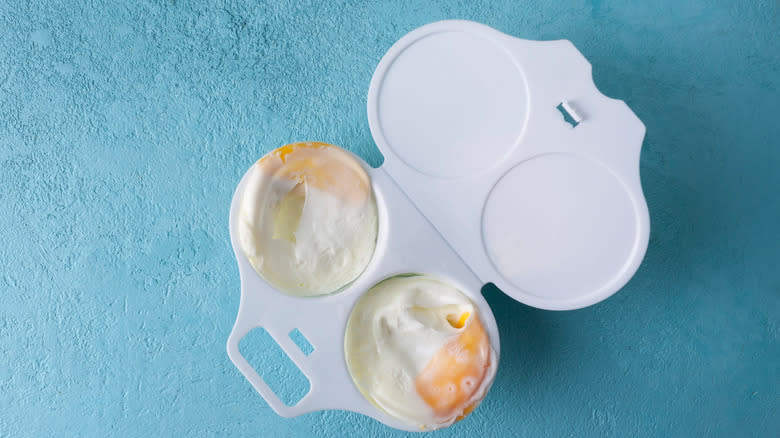
One of the best parts about cooking eggs in the microwave (specifically scrambled or poached eggs) is that you can make them in a vessel you most likely already have in your kitchen. You can cook eggs in either plastic, glass, or ceramic containers in the microwave, but you'll likely get a faster and more even cook in something with thick, heat-retaining walls like a coffee mug or a ceramic bowl.
There are also vessels specifically meant for cooking eggs in a microwave, and which one is right for you depends on the style of egg you're trying to cook. Ceramic egg-making crocks are great for preparing scrambled eggs, and they come with a domed ventilation system on top for mess-free and efficient cooking. Some models even come with extra features like a handle for easy transportation in and out of the microwave as well as middle separators, which create perfect eggs for bagel sandwiches.
If you prefer glass cookware, you can look into adding Chang's Anyday Cookware to your collection, which can be used for much more than just morning eggs. Other containers include plastic, omelet-specific makers as well as plastic fried egg makers which include features like non-stick surfaces and egg shapers. Whether you opt for a container you already have or add a new gadget specifically for your new morning routine, you'll find the process practically effortless. Plus, it results in a delicious morning meal each time.
Fully Submerge Your Eggs In Water When Poaching
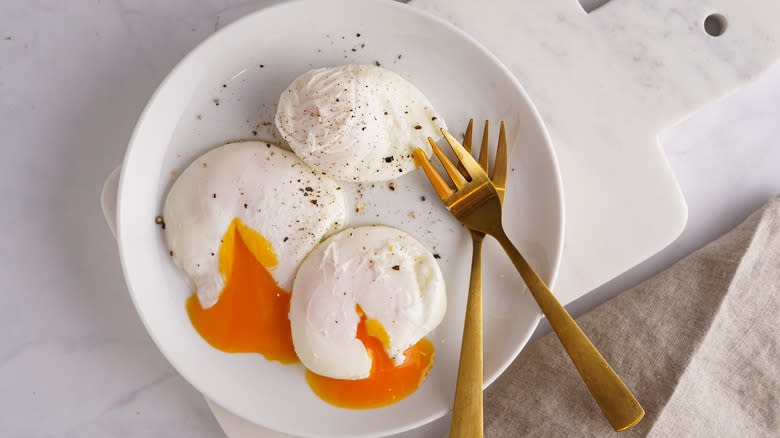
Making poached eggs is a delicate and refined process no matter what cooking medium you are using, but it holds especially true when preparing them in a microwave. Since an egg can explode when microwaved, it is essential to make sure your cracked eggs are fully submerged in water before attempting to poach them in the microwave.
Don't let that intimidate you into rethinking this option, though. When done correctly, it can be a fast route to perfectly poached eggs in minutes that anyone can master. To start, fill a shallow bowl with water — look for one that is flat on the bottom, so your eggs don't pool together — then crack your eggs into the bowl. Before making poached eggs in the microwave, ensure there is enough water in your bowl so your eggs are entirely submerged. You can opt to add vinegar at this time, which can help your eggs from getting stringy, frayed edges.
Your cooking time will depend on your microwave's wattage. After a couple of minutes, check your eggs' progress and add 30-second cooking intervals if necessary. When removing, opt for a utensil that can drain any access water, including a slotted spoon or a fork. Then, place the egg on a towel or paper towel to pat off any excess water. In just a couple of minutes, you'll have an elevated morning breakfast or topper for your bowl of ramen.
Don't Be Afraid To Add Mix-Ins For Omelets

Making omelets sounds easy in theory but can be more complicated in execution. Between ensuring your custardy eggs don't stick to the pan, delicately folding in your fillings, or dispersing mix-ins, it might seem easier to leave this breakfast option to your local diner. Luckily, this time-consuming breakfast item can come together in just a few minutes thanks to a microwave omelet maker.
Most of these tools can hold multiple eggs at once (typically up to four eggs at a time), so you can make an omelet packed with protein. It is easier to crack your eggs into a separate bowl and lightly beat them before adding them to your omelet maker, as the omelet maker might be too shallow to thoroughly mix your egg yolks and whites. Once fully incorporated, you'll want to fill both sides of your omelet maker and cook in the microwave in short intervals until fully done.
While cooking your omelet in the microwave might feel like a shortcut, it doesn't mean you have to skip the extra steps of incorporating cheese, meats, and veggies. When it comes to mix-ins, you have two options. You can either add them to the uncooked mixture before placing it in the microwave, or you can wait until your eggs are cooked and sandwich them between your two omelet halves. Either way, remember to cook any meat fillings before adding them, as they might not fully cook in the microwave.
Take The Wattage Of Your Microwave Into Account
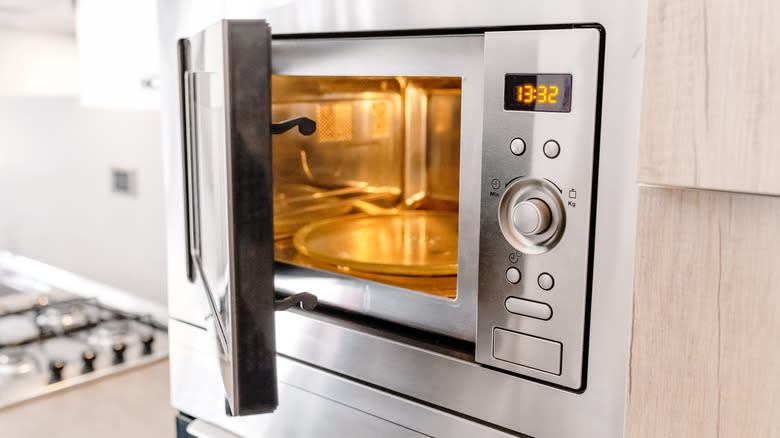
Regardless of what you're cooking in the microwave, it is very important to take your microwave's wattage into consideration — but this sentiment holds especially true when cooking eggs. The wattage can be found on the front or back of your microwave or online when looking up the microwave's model number. This, in conjunction with using the correct power level, will make a big difference in your cooking time.
Many microwave users do not realize that the automatic setting on a microwave (the setting used when you hit the 30-second express cook button) is a high-power setting that results in more intense and higher heat. This can be fine for quickly warming up leftovers, but it's not ideal for foods like eggs that require a more gentle heat. Knowing your microwave's wattage and being able to adjust your power levels can take making microwaveable eggs from a guessing game to an exact science.
Once you've gotten ahold of both of these settings, you can more accurately predict how long your eggs will take to cook in the microwave. With that being said, it's important to cook in intervals and fluff your eggs in between to ensure the right texture. This process of fluffing can also eliminate potential cold spots in your food, which can result in potential bacteria growth, according to the United States Department of Agriculture.
Add Your Butter Or Oil At The End Of Cooking

When making scrambled eggs on the stove, it might be second nature to throw a drizzle of olive oil or a tab of butter into the pan while it heats up before adding your eggs. This might be done to keep your eggs from sticking, to add flavor to your eggs, or both. Either way, it is not a necessary step when cooking eggs in the microwave.
If you don't want to sacrifice the flavor that the tab of butter or oil adds to your cooked eggs, don't worry. You can still achieve it by adding either of them as the last step when cooking eggs in the microwave. Once your scrambled eggs are done, mix a slab of butter until it's fully melted and incorporated into your eggs. (This can be helpful if your scrambled eggs come out a little overcooked and you need to break them up into a more scrambled texture before serving.) If you do opt for poached eggs, an omelet, or a fried egg, feel free to add that drizzle of olive oil to your finished product. It's the perfect way to take your microwave eggs up a notch for your easy breakfast, lunch, or mid-day snack.
Skip Making Fried Eggs In The Microwave
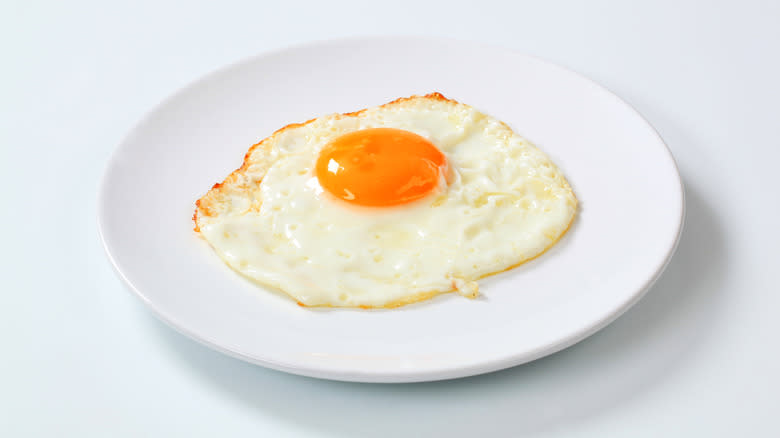
Cooking eggs in the microwave works because, when done at the right temperature settings, you can achieve a fluffy, silky, and almost custardy texture that is ideal for scrambled or poached eggs. Unfortunately, this does not hold true for achieving the ideal crispy, flaky texture of a fried egg. While cooking eggs in the microwave is all about ease and speed, fried eggs are potentially the fastest way to cook eggs on the stove and result in the least amount of mess. In short, the small convenience you'll get from cooking in the microwave probably doesn't outweigh the lack of texture and flavor.
If you are in a pinch or don't have access to a stove, you definitely can attempt frying an egg in the microwave. First, you'll opt for a plate rather than a bowl or mug, add a little olive oil to the surface, crack the egg on the plate, and microwave until the whites are cooked through. You won't get the crispy, fried edges because the plate won't conduct heat the same way your pan will, but you will get a fully cooked egg where your egg yolks and whites are cooked separately.
Microwave An Egg Bake Or Shakshuka For A Group
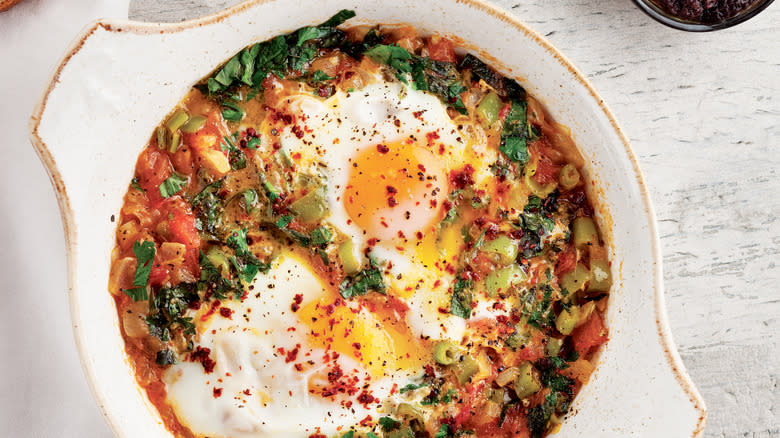
No matter how you approach it, making breakfast for a group is a difficult task. You need to have every element ready in time, so you can serve it all hot. Plus, you ideally don't want to be stuck with a massive pile of dishes at the end of your meal. There are a couple of hacks for this, including making sheet pan-fried eggs in the oven or baking an egg casserole. Both yield great results, but there are also a few ways to make eggs for a group that requires just a few minutes. That might sound impossible, but the answer is utilizing your microwave.
If you have a pan that is small enough to fit in your microwave but big enough to hold all of your ingredients, you can make a casserole-style bake in the oven similarly to how you would make scrambled eggs or an omelet. You'll want to add any extra ingredients, like bacon, ham, cheese, spinach, or veggies, to your egg mixture (ensuring any meats are cooked thoroughly before adding) and cook covered for a few minutes until your eggs have set. This will result in a flavorful egg bake that can be cut into individual pieces and served to a group. Another option is a microwave shakshuka, which cooks for a few minutes and can serve multiple people for breakfast, lunch, or dinner (especially when served with pita, toasted bread, or a side salad).
Cook Eggs In Longer Intervals For Breakfast Sandwiches
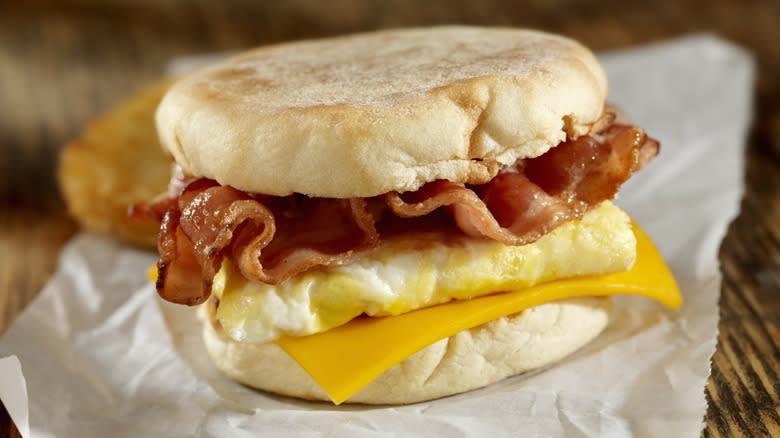
When cooking eggs in the microwave, that light, fluffy texture can result in a delicious meal, especially when making a silky omelet or piling scrambled eggs on top of a slice of toast. But if you're making eggs in the microwave for a sandwich, you'll need to prepare eggs that have more structural integrity. To achieve this specific desired texture, you should do a few things differently.
To start, you'll want to cook your eggs straight through without stopping to mix too often. If you're worried about cold spots or your eggs not cooking all the way through, it might help to mix your eggs during the first minute of cooking before letting them go until the end. This prolonged cooking time will result in a more disc-like shaped egg which will have a sturdier texture. This can be great topped on a bagel, in a sandwich, or eaten on the go since it's much less messy.
Read the original article on Tasting Table.

